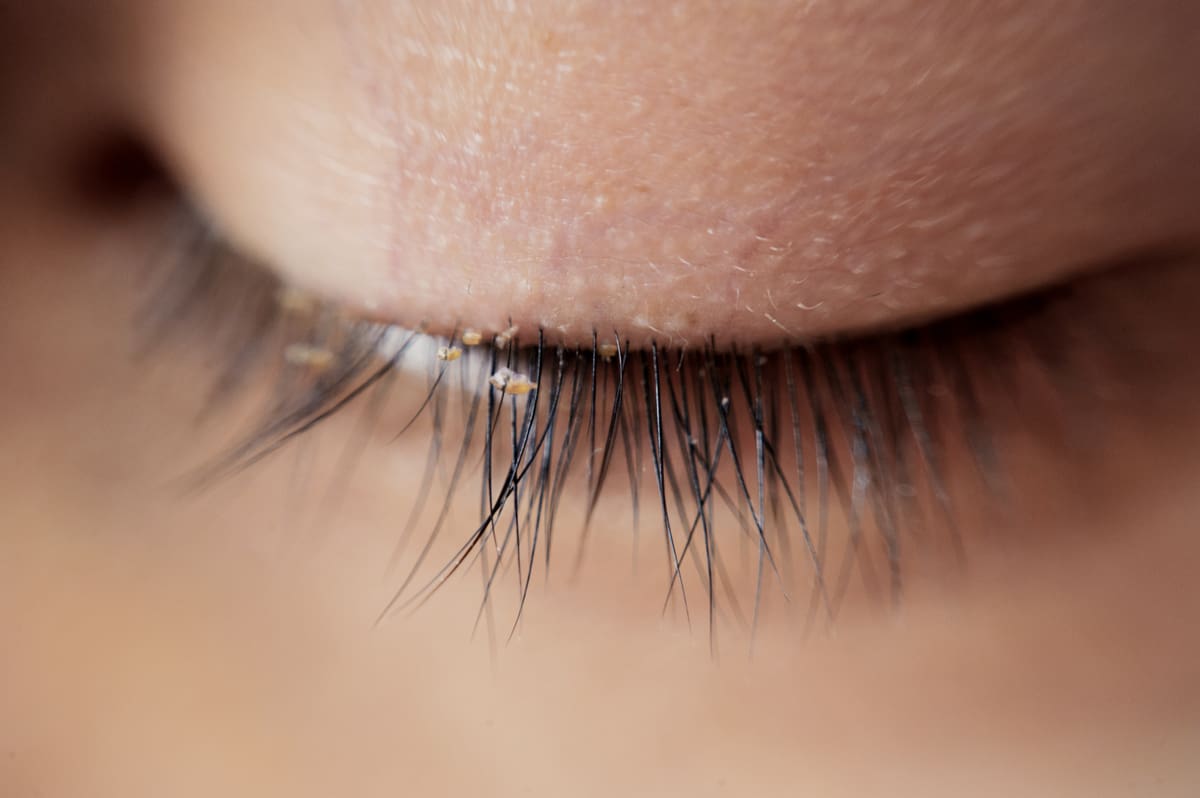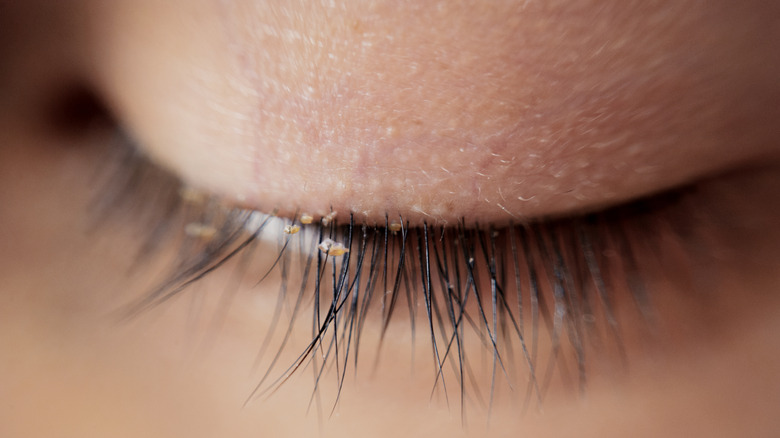Eyelash mites might sound like something out of a horror story, but they’re more common than you think. These microscopic creatures, known as Demodex mites, live on nearly everyone’s skin.
For most, they’re harmless. However, when their population grows out of control, they can lead to irritation, discomfort, and even eye problems. Knowing how to spot and manage them is essential, especially as we age.
What Are Eyelash Mites?
Demodex mites are tiny parasites that primarily live in hair follicles and sebaceous glands, according to WebMD.
There are two main types: Demodex folliculorum, which lives in hair follicles, and Demodex brevis, which prefers oil glands. While these mites naturally coexist with humans, factors like age, poor hygiene, or a weakened immune system can cause their numbers to increase, leading to issues such as blepharitis (eyelid inflammation).

Signs You Might Have Eyelash Mites
While not everyone experiences symptoms, an overgrowth of Demodex mites can cause noticeable discomfort. Signs include:
- Red, itchy, or swollen eyelids.
- A gritty or burning sensation in the eyes.
- Crusty debris around the base of the eyelashes.
- Eyelash loss or thinning.
- Increased sensitivity to light.
If these symptoms sound familiar, it may be worth discussing the possibility of eyelash mites with your doctor or eye specialist.
How to Manage and Eliminate Eyelash Mites
The good news is that controlling eyelash mites is often simple with good hygiene and proper care. Here are steps that Healthline has recommended to take:
- Keep Your Face Clean
Wash your face daily, paying special attention to your eyelids and lashes. Use a gentle, fragrance-free cleanser, as harsh soaps can irritate the skin further. - Invest in Eyelid Wipes
Specially formulated eyelid wipes can help remove debris and excess oil where mites thrive. Look for products containing tea tree oil, known for its antimicrobial properties. - Wash Bedding Frequently
Mites can transfer to bedding, so clean your pillowcases and sheets regularly. Use hot water and dry them on high heat for best results. - Avoid Sharing Personal Items
Sharing items like makeup or towels can spread mites, so keep these personal. - Consult a Specialist
In severe cases, a healthcare professional might recommend medicated ointments or prescription treatments to manage the condition.
Prevention is Key
For those aged 50 and older, maintaining proper skin care becomes even more critical, as changes in skin health can make it easier for mites to thrive. Regular check-ups and good hygiene habits can help prevent problems before they start.

While eyelash mites aren’t dangerous, they can cause significant discomfort if left unchecked. By staying informed and proactive, you can keep your eyes healthy and free from unwanted visitors.
Can Eyelash Mites Affect Your Vision?
Although eyelash mites typically don’t pose a serious threat to your eyesight, an untreated infestation can contribute to chronic eye irritation and other complications. In severe cases, excessive mite presence may lead to conditions such as:
- Chronic blepharitis: Long-term inflammation of the eyelids, which can result in blurred vision and discomfort.
- Meibomian gland dysfunction (MGD): When the mites clog oil glands in the eyelids, leading to dry eye syndrome and persistent irritation.
- Secondary infections: Scratching and rubbing due to itchiness can introduce bacteria, leading to infections that might require antibiotic treatment.
If you notice persistent eye discomfort despite practicing good hygiene, it’s best to seek professional advice to prevent further complications.
Who Is Most at Risk for Eyelash Mites?
While anyone can have Demodex mites, certain groups are more susceptible to infestations. Risk factors include:
- Older adults: As we age, natural oil production changes, creating a more favorable environment for mites.
- Individuals with weakened immune systems: Conditions such as diabetes, autoimmune disorders, or cancer treatments can increase susceptibility.
- People with oily skin: Excess oil provides the perfect breeding ground for mites.
- Those who frequently wear eye makeup: Not properly removing makeup can lead to clogged follicles and increased mite buildup.

Home Remedies to Complement Medical Treatment
In addition to medical treatments, some natural remedies may help manage eyelash mites:
- Tea tree oil: Diluted tea tree oil has been shown to effectively reduce mite populations due to its antimicrobial properties. However, it should never be applied directly to the eyes—use diluted products recommended by professionals.
- Aloe vera gel: Known for its soothing properties, aloe vera can help reduce inflammation and irritation caused by mites.
- Castor oil: Applying a small amount of castor oil to the eyelashes before bed may help prevent mites from thriving.
Eyelash mites may be tiny, but they can have a big impact on your eye health. By staying vigilant with hygiene and recognizing the signs early, you can effectively manage and prevent infestations. If you suspect an issue, don’t hesitate to consult an eye specialist for guidance.
Remember to share this information with family and friends—keeping everyone informed helps prevent unwanted eye conditions!
